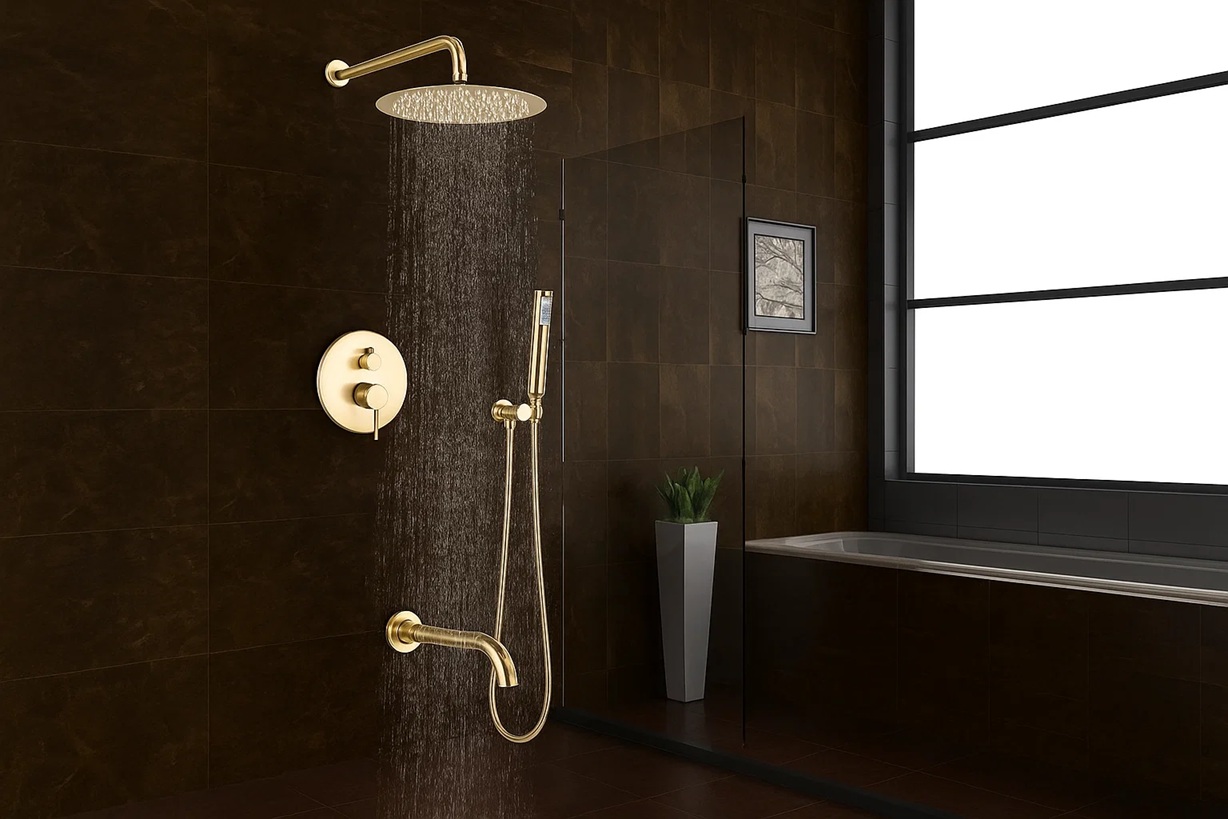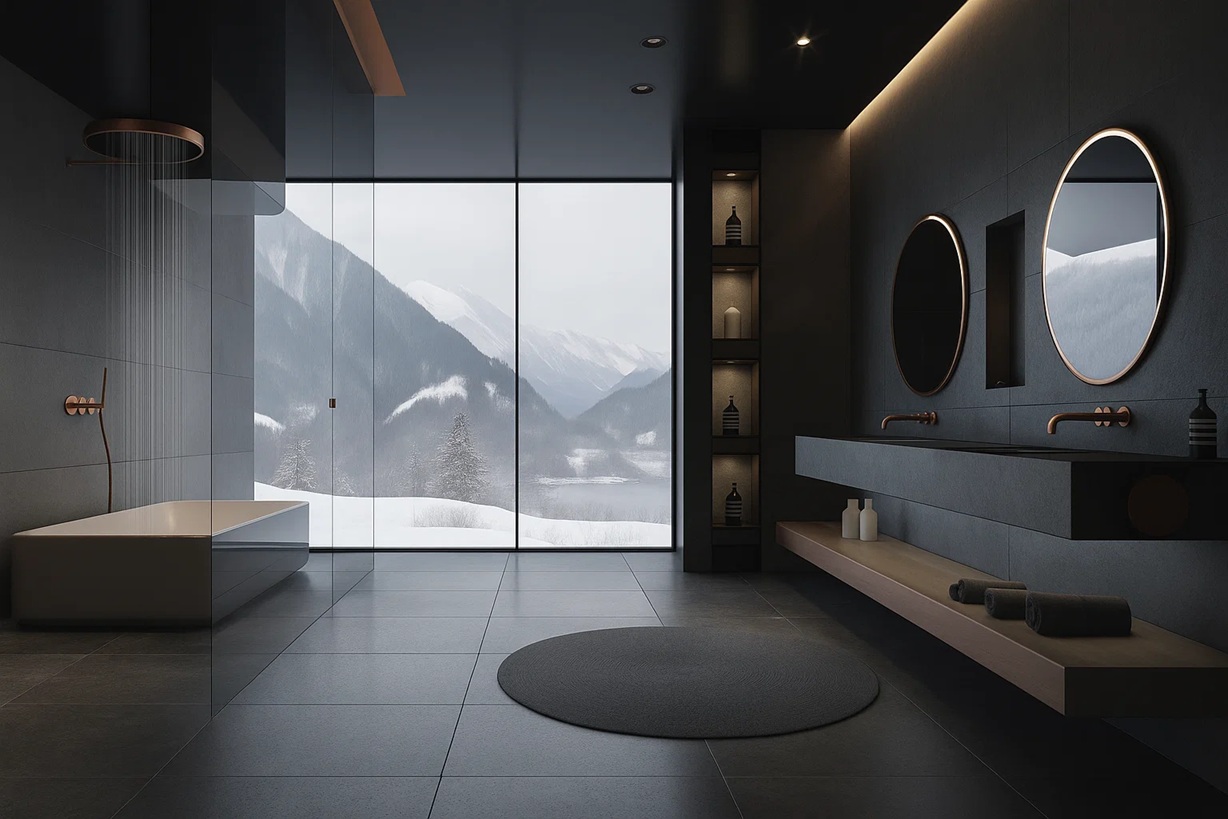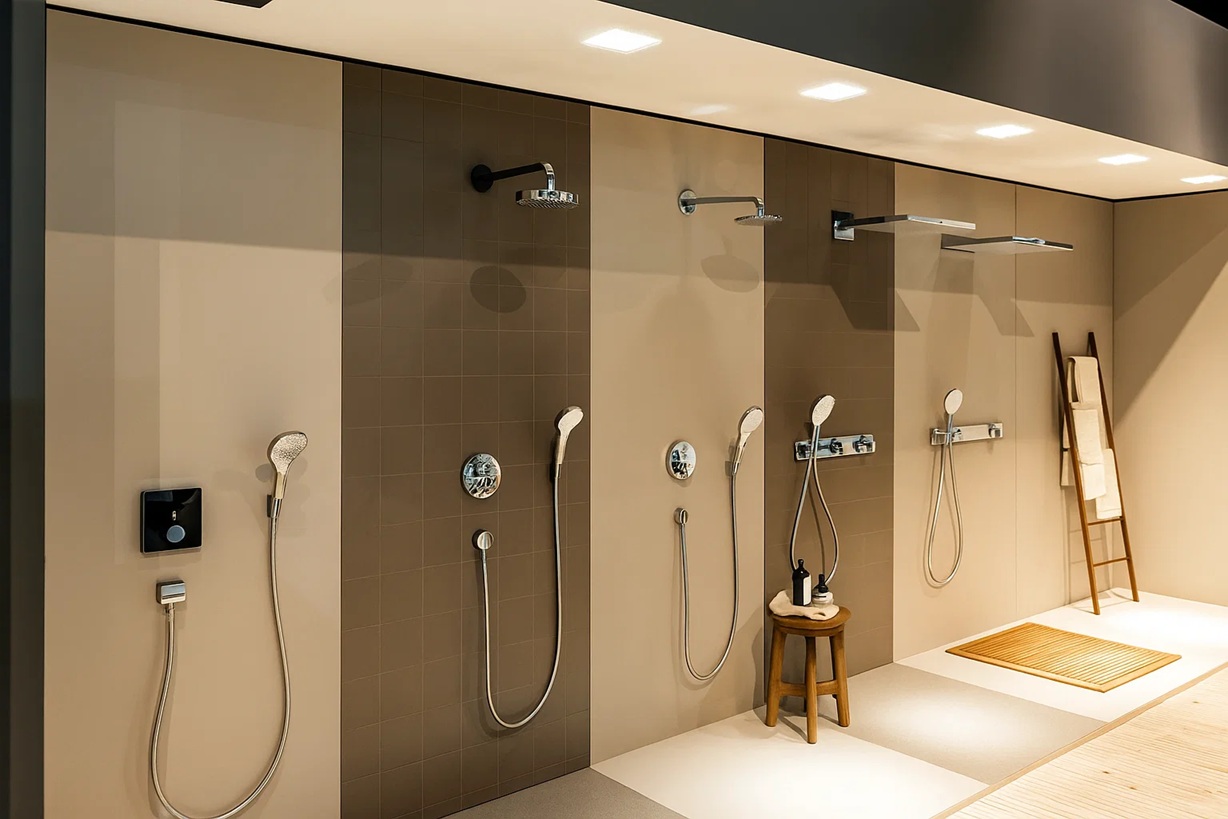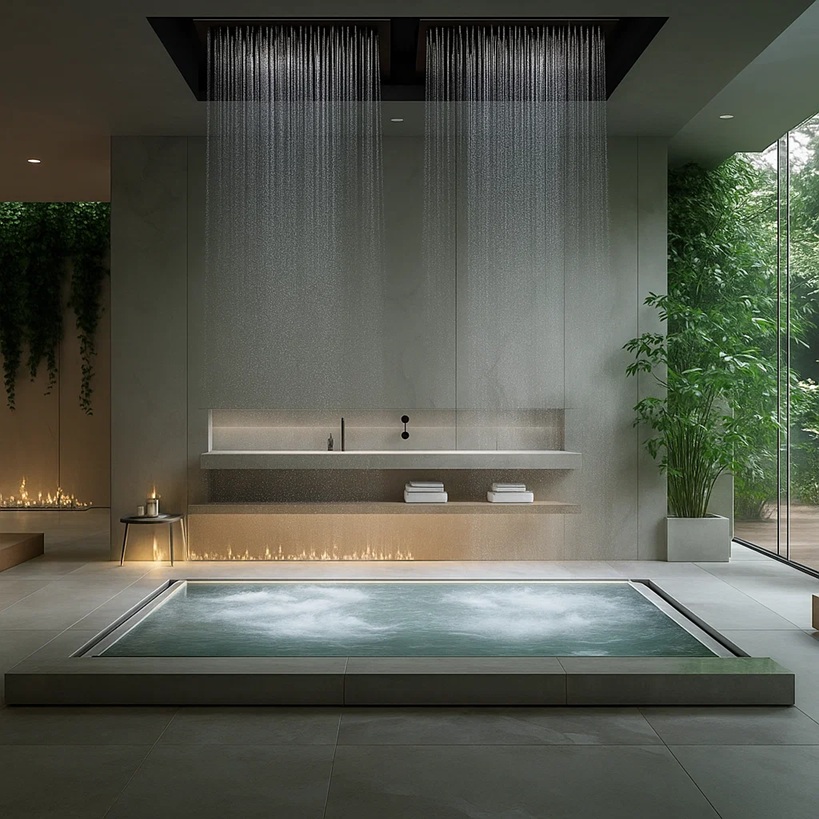Material & Finish Insights
The Art of Durability and Design in Hospitality Showers
In hospitality, the shower is more than a functional element — it’s a statement of quality, craftsmanship, and care. Every surface, finish, and texture plays a part in shaping the guest’s sensory experience and the property’s operational longevity.
At Hospitality Showers, we explore how materials and finishes influence performance, comfort, and aesthetics — revealing the subtle details that distinguish an ordinary shower from an unforgettable one.




Material Matters: The Foundation of Hospitality Quality
The materials selected for a hospitality shower must balance durability, ease of maintenance, and aesthetic value. Unlike residential settings, hotel showers face constant use, variable water conditions, and high hygiene demands.
Top material priorities for hospitality environments:
- Longevity: Resistant to moisture, heat, and corrosion.
- Hygiene: Non-porous surfaces that resist mold and bacteria.
- Aesthetics: Textures and tones that reflect brand identity.
- Sustainability: Responsibly sourced or recycled components.
Whether natural or engineered, the best materials unify performance and design — standing the test of time, guest after guest.
Reference: Hotel Design & Engineering Standards, 2024; Global Hospitality Materials Report, 2025.
Durability
Engineered materials built to resist corrosion, water damage, and wear.
Hygiene
Seamless finishes and antimicrobial coatings for optimal cleanliness.
Aesthetics
Textures and tones curated to express identity and luxury.
Sustainability
Materials responsibly sourced or recycled to support green design.
“Porcelain’s evolution into an aesthetic chameleon has transformed how designers approach hospitality bathrooms.”
— Interior Design Review, Vol. 46 (2024)
The Reign of Porcelain and Ceramic: Classic Yet Evolving
Porcelain remains the most trusted material for hospitality showers due to its strength, impermeability, and design versatility. Advancements in digital glazing now allow porcelain tiles to mimic natural materials such as marble, limestone, and wood, offering beauty without the fragility or maintenance concerns of the originals.
Advantages
- ✅ Scratch and stain resistant.
- 💧 Low water absorption (<0.5%).
- 🧽 Easy cleaning and chemical resistance.
- 🎨 Wide design adaptability for both luxury and budget segments.
Reference: Ceramic World Review, 2025; Material Design Journal, Vol. 11.
“Natural stone continues to symbolize timeless luxury — tactile, enduring, and infinitely adaptable.”
— Architectural Surface Review, Issue 88
Natural Stone: Luxury Rooted in Authenticity
Few materials communicate elegance like natural stone. Hotels from Aman Kyoto to The Langham Chicago embrace marble, travertine, and slate for their innate richness and tactile warmth.
Today, designers merge tradition with innovation — balancing timeless appeal and modern performance.
Practical Enhancements:
- 🧴 Nano-sealants to resist etching and staining.
- 📚 Book-matched slabs for minimal waste and maximal symmetry.
- 🧱 Porcelain lookalikes blended for cost-effective elegance.
💡 Tip:
Always specify non-slip finishes or fine texturing to enhance guest safety.
Reference: Stone Trends in Hospitality Interiors, 2025; Architectural Surface Review, Issue 88.
Metal Finishes: The Jewelry of the Shower
Fixtures and fittings define the visual character of a hospitality shower. The latest trend moves beyond traditional chrome into expressive metallic finishes that complement diverse design moods.
Modern coating technologies like PVD (Physical Vapor Deposition) extend durability, prevent tarnish, and maintain color consistency even under heavy use.
Reference: Metal Finishes in Architectural Design, 2025; Bath & Fixture Innovation Report, Issue 104.
Texture and Tactility: Designing for the Senses
Hospitality design today is as much about how a space feels as how it looks. Guests crave tangible experiences — surfaces that are smooth, cool, warm, or matte to the touch.
Emerging Textural Trends
- 🪶 Soft-touch matte ceramics for modern calmness.
- 🪨 Micro-textured stone surfaces adding organic grip.
- 🔹 Ribbed or fluted tiles creating rhythm and visual depth.
- 🔩 Brushed metal textures enhancing tactility on fixtures.
These tactile elements engage the senses, enhancing the emotional dimension of shower design — a critical factor in perceived luxury.
Reference: Sensory Design Journal, Vol. 8 (2025); Tactile Architecture Review, 2024.
Maintenance, Hygiene, and Lifecycle Value
The true test of a hospitality shower material is its performance over time. Maintenance efficiency directly influences operational costs and guest satisfaction — proving that lasting quality is the essence of modern hospitality.
Epoxy Grout & Seamless Surfaces
Prevent mildew buildup and maintain a polished appearance with low-maintenance joints.
Anti-Lime Glass Coatings
Protect shower glass from mineral buildup and maintain clarity with minimal effort.
Non-Porous Materials
Ensure hygiene with smooth, sealed surfaces that simplify daily cleaning routines.
Modular Panels
Enable quick repairs and replacements for long-term sustainability and cost efficiency.
“Hotels that invest in maintenance-friendly materials see lower lifetime costs — proving durability is as luxurious as design.”
The right combination of engineering precision and design intelligence ensures efficiency without sacrificing aesthetics — a balance that defines hospitality innovation.
Reference: Hotel Maintenance & Operations Handbook, 2025; Facility Management Review, Vol. 72.
Sustainable Material Choices: Design With a Conscience
As sustainability becomes a design imperative, the focus has shifted toward eco-friendly materials and circular solutions that blend performance, luxury, and environmental integrity.
“Eco-conscious materials can achieve luxury standards, setting new benchmarks for design with integrity.”
Reference: Green Materials in Hospitality Construction, 2025; LEED v4.1 Materials & Resources Manual, USGBC.
Color Trends and Emotional Design
Color remains one of the most powerful tools in shaping mood and perception. Modern hospitality shower design embraces palettes that evoke natural harmony and emotional wellness through material and tone.
Earth Tones
Sand, clay, and moss — grounding palettes that inspire biophilic calm.
Soft Whites & Greys
Bright, clean hues that evoke purity, comfort, and spacious serenity.
Deep Metallics
Rich, reflective tones that bring depth and timeless sophistication.
Contrasting Accents
Vibrant pairings of light and dark to define architectural edges.
“Thoughtful color curation connects design with emotion — reinforcing brand identity and guest well-being simultaneously.”
Reference: Color Psychology in Hospitality Interiors, 2025; Pantone Hospitality Forecast, 2025 Edition.
Conclusion: Where Beauty Meets Purpose
In hospitality, every surface tells a story — of design, resilience, and respect for the guest experience. The right material and finish choices express a brand’s values, elevate comfort, and ensure longevity without compromise.
At Hospitality Showers, we celebrate the artistry of detail — where color, texture, and material unite to create showers that last, inspire, and define the essence of modern hospitality.














